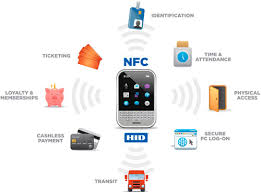2015 was an inflection point for the usage of mobile phones for NFC-enabled in-store payment, as it will be the first year in which the multiple prerequisites for mainstream adoption – satisfying financial institutions, merchants, consumers, technology vendors and carriers – are sufficiently addressed.
By end-2015, five percent of the base of 600-650 million near-field communication (NFC) equipped phones will be used at least once a month to make contactless in-store payments at retail outlets. This compares with monthly usage by less than 0.5 percent of the 450-500 million NFC-phone owners as of mid-2014. Contactless mobile payment will not be mainstream by end-2015, but niche adoption will be a major progression from near nil in prior years.
The core advantage with any contactless smartphone transactions is the potential for greater security, when payments are made with phones featuring either built-in (via hardware or software) or SIM-based tokenization capability. When someone pays using an NFC-device, the tokenization facility creates a unique code (known as a token) which is sent from the device to the merchant’s NFC-enabled till. The credit card number is not transferred which means in the event of a breach, only card information used for traditional transactions would be exposed. The card information is either stored with the issuing networks (such as Visa or MasterCard), or is stored in the cloud (HCE), or in a secure element on the phone. The token is only good for a single transaction and unusable otherwise. A fraudster who intercepted the transaction would only get access to the single-use token but not the card details.
Using a fingerprint, an eye scan or a heart rate sensor as an additional form of authentication makes the payment more secure still. The combination of biometric authentication, an embedded secure element and tokenization may provide more robust security than card swipes or chip and PIN.
We expect the volume of NFC-smartphone transactions and the range of spend value to increase steadily over time as consumers become more familiar with the process, and more banks and merchants in more markets accept this form of transaction. However, contactless mobile payments will likely co-exist for some time with all other means of payment, from contactless credit cards to cash. It will be a long while before the majority of us can jettison our physical wallets.
